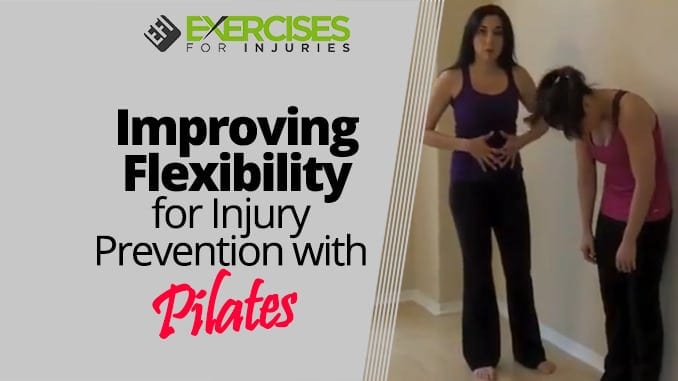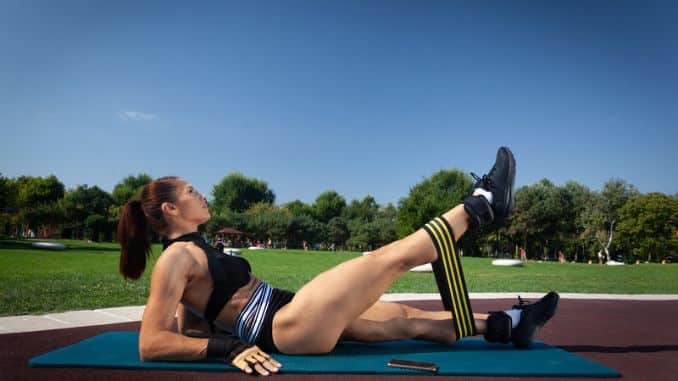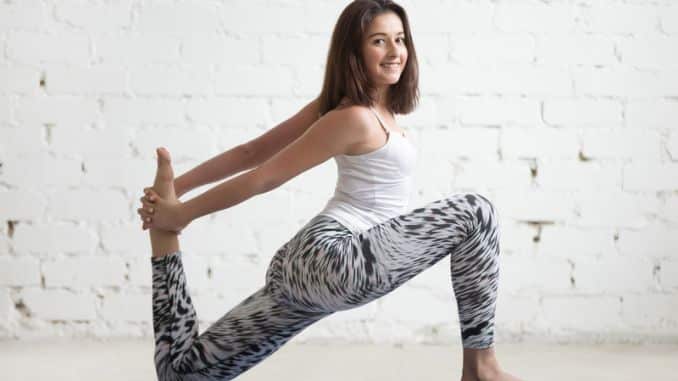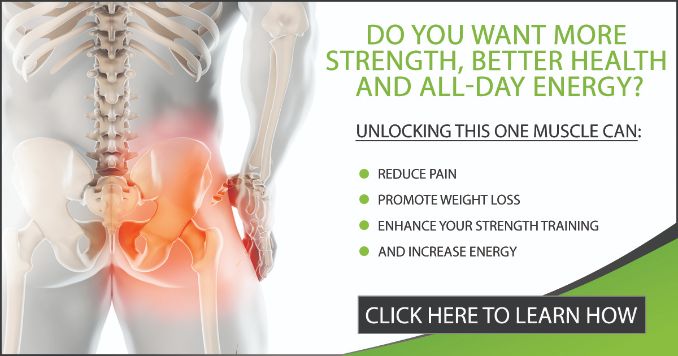
The full-body conditioning program uses controlled movements and breathing techniques to improve flexibility and core strength. The goal of Pilates is not just to build muscle but to understand and develop control over your body by improving posture, movement, and breathing. With regular practice, Pilates reduces the risk of injury and enhances functionality by building strength and flexibility in your core and improving posture.
I have had opinions regarding different movement systems like yoga, Pilates, and kettlebells.
I am coming around and seeing that many of the new lessons that I will be taught will be found in other professions and movement systems.
With this realization, I have become more open to other viewpoints, learning from them and seeing what I can use for my clients.
Enjoy the article from Sylvia Favela on how she uses Pilates to improve flexibility and prevent injuries.
Take it away, Sylvia.
As time passes, we get older, and with age comes the misfortune of being less flexible.
With Time We Become Less Flexible
In general, men tend to lose their flexibility earlier on than women. This traces back to boys starting sports at a young age before girls follow suit.
Playing sports puts a constant strain on the body, especially on the joints. If not adequately followed up with some exercise to promote flexibility, the results are injuries. Now sports aren’t the only culprit for the lack of mobility of the body. We live in an era of computers and sedentary jobs; we sit in front of a computer sometimes ten-plus hours in a day, followed by hours sitting in a car battling traffic.
Our bodies will start to tense, resulting in a vast mass of tight muscles. I have experienced this over the years, working with numerous clients who suffered from injuries due to a lack of mobility and flexibility.
At one point, I had a client who suffered so severely from low back pain she injured her knee because she lacked the range of motion her body needed to prevent it. Something so simple as turning around to reach into the back seat to grab a package led to an injured knee.
Big Mike Had Poor Flexibility and a Very Bad Back
Take Mike, for example; he’s a big guy and stands 6’4 tall. Mike came to me with zero flexibility, and he suffered from low severe back pain. Over ten years as a firefighter, he was required to be active every day, performing rigorous workouts, and with the daily demands of being a firefighter, his body suffered.
His profession led to him not being able to keep his body agile. Improving his agility is quickly done by performing exercises that enhance his flexibility.
Mike suffers from severe low back pain. Every day is a challenge for him to get his day started. He can barely roll out of bed in the morning. To explain this further, he suffers from protruding discs in his lower lumbar spine, specifically L2 L3 and L4 L5. This has led to decreased flexibility in his lower back and legs. The long-term results of his inflexibility have been wear and tear on his body resulting in some severe injuries.
His injury was so severe that his orthopedic doctors routinely gave him an epidural injection (steroid) to alleviate his pain. If you are not familiar with what an epidural shot consists of, allow me to explaiIt’st’s a steroid injected into the spine to help reduce the inflammation of the muscles in the low back so your body can function with the least amount of pain possible. But they didn’t stop there for him. He underwent treatments of Rhizotomy to temporarily relieve his low back pain caused by inflamed facet joints. Now, this treatment “t “switches “off” the pain signals from the nerves in your spinal cord that tell your brain you are in pain.
This is What I got Mike To Do To Fix His Back.
Once I met Mike, I instantly knew my specialized methods of usiPilatestes would help to open up his back and release the tightness in his hips.
During our first appointment, I chartMike’se’s mobility and flexibility as zero. He was a tight ball; his body lacked a range of motion, and he couldn’t lift his leg without feeling pain shooting up and straight to his back.
I began with my specialized Pilates movements involving the deep, transverse abdominals that, in turn, force the low back to open up and not be overused. Followed by exercises to help with the legs’ range of motion to loosen up the hip flexors, psoas, and hamstrings.
AlthouPilatestes has been confused as just a stretching exercise, the benefits are far more significant. Strengthening while improving flexibility is the primary focus of my Pilates program.
What Happened to Mike?
Over a short time, diligently practicing Pilates movements with Mike, we noticed a considerable improvement in his flexibility and decreased low back pain.
He could now move his leg freely without the shooting pain up his leg to his back.
The last time he could keep his leg straight was when he was 16. Now he has gained the flexibility and strength to straighten his leg without pain. But, most importantly, he can now get on a treadmill and do an intense Pilates workout without feeling the pain and strain of a once-tight solid muscle mass of inflexibility.
Mike continues to see me every week; his improvement has been unreal, and he continues to stick with it.
Two Exercises that Helped You Improve Flexibility Mike Out
Here are two exercises I had Mike perform every single week.
1. Hip Flexor Circles with Band:
- You will need a stretch or exercise band to assist in this movement.
- Keep your pelvis neutral and square to the floor.
- Please do not allow your hips to rock. Keep them firmly pressed down to the floor, and engage your abdominals. Primarily your TA muscle (Transverse Abdominals) — this is the deepest layer of your abdominals. The muscle lies between your belly button and pubic bone and acts as a corset to strengthen the abdominals and release unneeded pressure off your joints.
- Place the band behind your foot, and pay close attention to not allow the crew to roll up. And, do not allow the team to roll off your foot. This will result in the band flying off and potentially hitting you. (Be Cautious)
- While keeping your left hip anchored to the floor, place your left foot in the band.
- Inhale, take the leg across the bottom and circle it down and around. Make sure to breathe, inhale across and exhale to circle. Holding your breath will only make your muscles tense up.
- Do not hyperextend your knee or lock it out; tighten the thigh muscle (quadriceps) to lengthen the leg.
- Do ten circles in one direction and reverse your direction
- Repeat on the other side.
2. Hamstring and Flexor Stretch:
- Sit up as straight as possible; bend your knees slightly if necessary.
- Legs straight, shoulder-width apart, feet flexed.
- Arms up at a” ‘T” position
- Inhale, rotate your torso, twisting at the waist to the right side.
- Exhale, reach forward as your back arm, palm internally rotates, and your front palm reaches past the small toe.
- Inhale, extend your spine and reach forward.
- Exhale reaches forward and down again.
- Inhale, come up in a diagonal line and rotate back to the center.
- Repeat on the other side.
- Make sure to keep your abdominals drawn in towards your belly button.
- Do not hyperextend your knee or lock it out. Instead, tighten the thigh muscle (quadriceps) to lengthen the leg.
With continued practice of Pilates, not only will you experience fewer injuries, you’ll improve your body’s mobility and better your sports performance.
Dozens of professional athletes use Pilates to give them that extra edge to perform better without being brutal to their bodies. It makes sense to keep your body moving fluidly in any activity, whether hiking, golfing, or playing basketball signs of improved flexibility can give you that extra point and range.
Your friend in Pilates health,
Sylvia Favela
www.360PilatesWorkout.com
About Sylvia
With over 12 years of experience in Pilates, she specializes in knee injuries and severe low back pain. Sylvia has owned and operated a Pilates Studio in Orange County, California, where she had the opportunity to work alongside Dr. John Gatsinaris, D.C., from Next Level WellnessCenter with patients who suffered from severe back pain and sports injuries.
She has relocated her stud “o “Pilates Fitness Stu” io” to her hometown in the city of Chino Hills, where she continues to help people in her community tone their bodies wiPilatestes and lose weight who suffer from severe back injuries from sports or accidents.
Sylvia is the creator and author of “Pilates Workout Solution” and the owner of “Pilates Fitness Studio” in Chino Hills.
If you liked the above post, you might like this:



